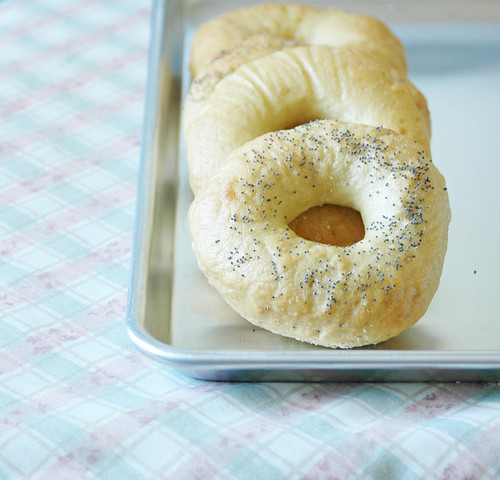
It's definitely autumn around here these days - it's really cold at night. I wanted to make something that would warm me up from the inside. Also, I actually had a few days off, so I took advantage of that to make bagels. It's a two day process.
I've been working my way through The Bread Baker's Apprentice and so far it's been a fantastic book. All of the recipes have turned out, although that may be partly due to my habit of repeatedly checking to make sure I'm following the recipe exactly. It's the perfectionism in me I guess.
Bagels
Makes 12 large bagels.
Sponge
1 teaspoon yeast
4 cups bread flour
2.5 c water, room temperature
Dough
1/2 teaspoon yeast
3.75 cups bread flour
2.75 teaspoons salt
2 teaspoons malt powder, or 1 tablespoon malt syrup or honey or brown sugar
To finish:
1 tablespoon baking soda
cornmeal
seeds/salts for topping
1. Make the sponge by stirring the yeast into the flour in a bowl. Add the water and stir until it forms a smooth, sticky batter (like pancake batter). Cover with plastic wrap and let it sit at room temperature for 2 hours.
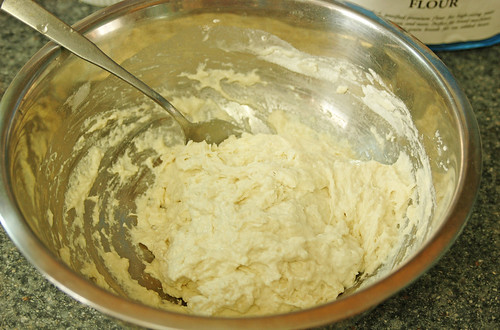
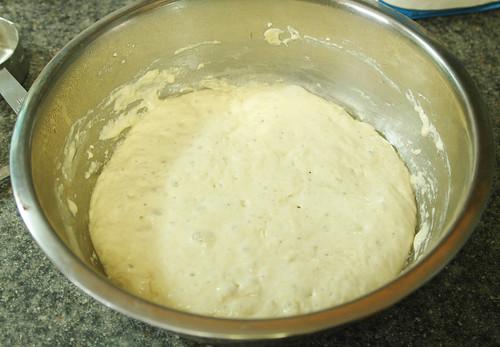
After sitting for two hours, it was nice and bubbly.
2. To make the dough, in the same bowl, add 3 cups of the flour and all the salt and malt. I used a tablespoon of brown sugar. Stir till the ingredients make a ball.
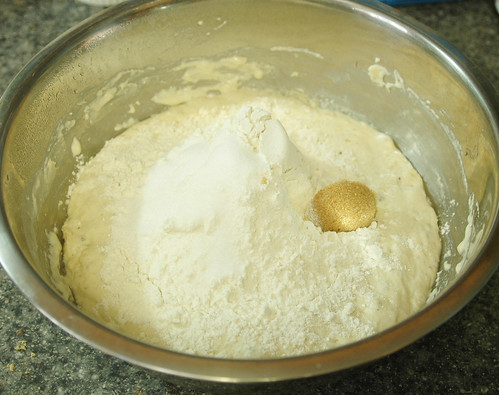
3. Transfer dough to counter and knead at least ten minutes. There shouldn't be any raw flour - all the ingredients should be incorporated. This dough needs to pass the windowpane test.

This dough was the stiffest I've ever worked with.
4. Immediately divide the dough into pieces. I weighed mine to make them pretty equal. They should be about 4.5 ounces for standard bagels. If you want, make them smaller. Cover the rolls with a damp towel and let rest for about 20 minutes.

5. Line two sheet pans with parchment paper and mist lightly with spray oil.
6. Shape the bagels. You can either poke a hole in the middle of the roll and gently widen it or roll the dough into ropes and connect the two ends to make a circle. Place the shaped bagels on the pans. Cover with plastic wrap and let sit for about 20 minutes.
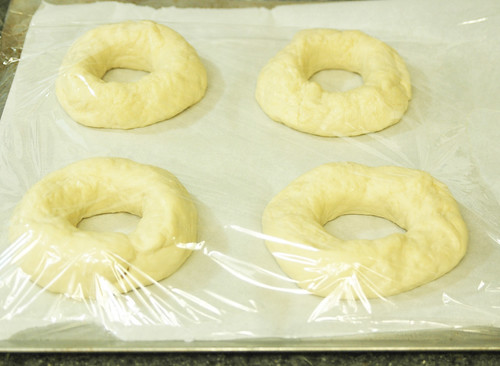
7. Check to see if they're ready to be retarded by using the float test. Fill a bowl with room temperature or cool water and place a bagel in it. It should float within ten seconds of being dropped into the water. If it does, return the bagel to the pan and pat it dry gently. Put the pans in the refrigerator overnight.
If it doesn't float, return to the pan, pat dry, and continue proofing. Check the tester every 10-20 minutes until it floats.
8. When you are ready to bake the bagels, preheat oven to 500F. Bring a pot of water to a boil. Peter Reinhart must have had a huge pot of water. I used the biggest one we had and still had to the do the bagels one by one.
9. Boil the bagels for 1 minute, flip them, and boil for another minute. Sprinkle a parchment lined sheet pan with cornmeal. If you want to top your bagels, do so as soon as they come out of the water.
10. Once all of the bagels are done boiling, bake for 5 minutes.* Rotate the pans and reduce oven to 450F once you've rotated them. Bake for another 5 minutes. Transfer to wire rack and cool.
*I did my bagels in batches. I re-used the parchment paper from the first batch, which was wet from where the bagels were sitting. My second batch, the bagels that were baked on the wet places came out kind of soggy on the bottom. So...don't do that...make sure your parchment paper is dry.
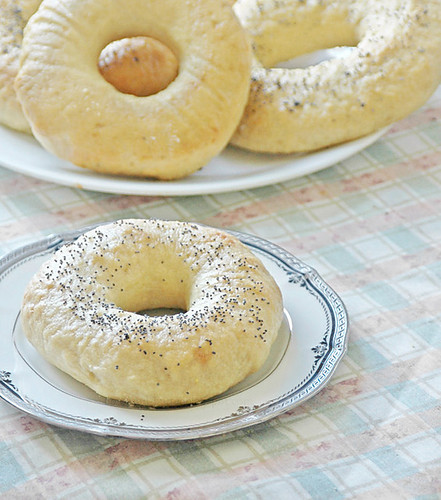
Whoah, a long process, but I have to try this! Thank you for sharing :)
ReplyDeleteI just had another look at this, in the sponge part, how much water is needed? 2.5 cups, litres?? :D
ReplyDelete2.5 cups, sorry about that :) it is fixed now
Delete